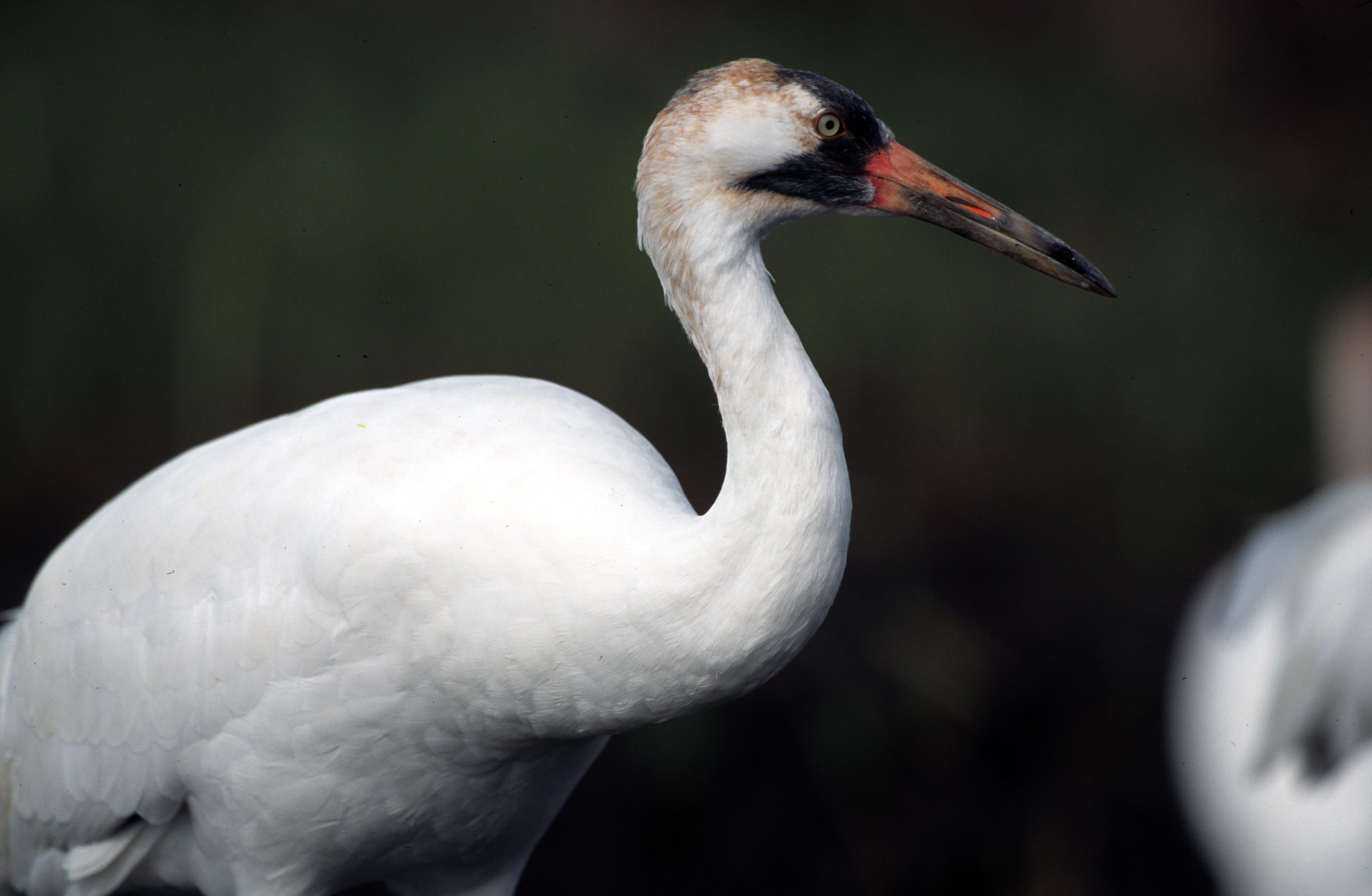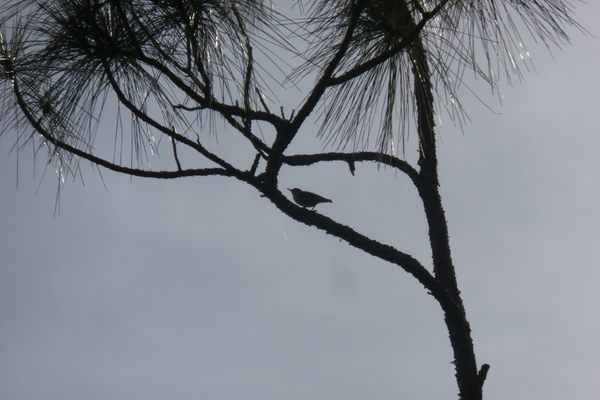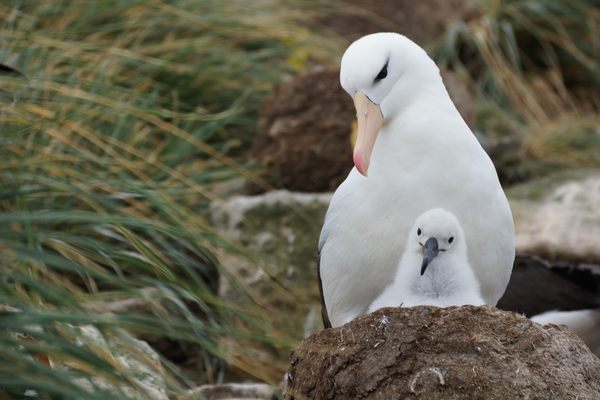Why North America’s Gangliest Bird Is Hitching a Ride With the Coast Guard
Whooping cranes are on the move, because of budget cuts.

At five feet tall and a whopping 17 pounds, whooping cranes are one of North America’s biggest, heftiest birds. They have their majestic moments, but they’re also rather gangly and awkward. Their spindly legs trail after them in flight, their call sounds like a mangled bugle, and their black wingtips appear to splay out, like a gloved dancer’s spirit fingers.
This week, 33 of the rare birds are migrating, but they’re not using those wingtips. They’re flying with the U.S. Coast Guard from Maryland to Louisiana, where they will settle into a new home at the Freeport-McMoRan Audubon Species Survival Center. (A handful of them will eventually reside at some Texas zoos.)
Over the past two centuries, the cranes have had a rough go of it. Their range once stretched from Alberta, Canada, to the southern shore of Lake Michigan, with winter colonies in Mexico and on Texas’s Gulf coast, and scattered clusters elsewhere. They breed in the shallows of grassy wetlands, and as those landscapes shrank, so did the flocks. In the mid-20th century, when there were fewer than two dozen of these birds left in the wild, the species came vanishingly close to oblivion.
To keep the population aloft, teams at the U.S. Geological Survey’s Patuxent Wildlife Research Center in Maryland have spent the last five decades breeding and rearing the birds. They began with eggs collected in Canada’s Wood Buffalo National Park. Ever since, the goal has been to stabilize the population and prepare their feathered charges to leave the nest without too much human-ness rubbing off on them. The surrogates raised roughly 30 chicks a year with the help of some unorthodox tactics, including donning crane costumes, using bird puppets, and teaching fledglings to fly behind an ultralight aircraft. The project’s $1.5 million budget was a casualty of federal cuts last year, and now the remaining birds are en route to new homes.

Getting these birds to their new home calls for some intricate choreography—and protective gear. Teams of three or four people will corral each bird into its own wooden crate, about the size of a wardrobe box. These have air holes, but the birds won’t be able to see much. “There’s not a whole lot to stimulate them, you might say,” says John French, the zoologist in charge of the Patuxent center.
That’s for the best: A chilled-out bird is a safer bird, because a struggling one could hurt itself or its human handlers. Because of their six-inch beaks, for example, the humans will wear safety goggles and stick the birds’ long necks under their arms when transporting them. The team has tried sedatives over the years, “but we generally don’t use them,” says French. The birds have to travel standing up, and the handlers don’t want them to be too loopy.

Vans will then shuttle the birds to C-130 cargo planes operated by the U.S. Coast Guard. Since whooping cranes have a reputation for aggression, especially when ruffled, “the goal is to get them to their destination and out of the crates as soon as possible,” French says.
Their new homes will look pretty similar to their old ones, French says—large pens, where they’ll be encouraged to breed. Most of the ones making the move are breeding pairs that have lived their whole lives in captivity. The birds that are alive today all descend from a flock of just 16 individuals wintering at the Aranas Refuge in Texas in 1941. “It’s an incredibly narrow bottleneck,” French says. “It’s almost miraculous that they pulled through, but they did.” Since the late 1980s, a coalition of scientists in the United States and Canada have worked together to write and update a recovery plan, which involves maintaining breeding pairs and nurturing self-sustaining, resilient populations in the wild. The population has now rebounded to some 600 birds, between the wild flocks and the captive ones. Nudging the species off of the endangered species list is the ultimate goal, but it’s still far off.
Meanwhile, French says, the numbers are improving, and saying goodbye to the these long-necked creatures “feels like a great success story.” Even if he’ll be sad to see them go.



















Follow us on Twitter to get the latest on the world's hidden wonders.
Like us on Facebook to get the latest on the world's hidden wonders.
Follow us on Twitter Like us on Facebook